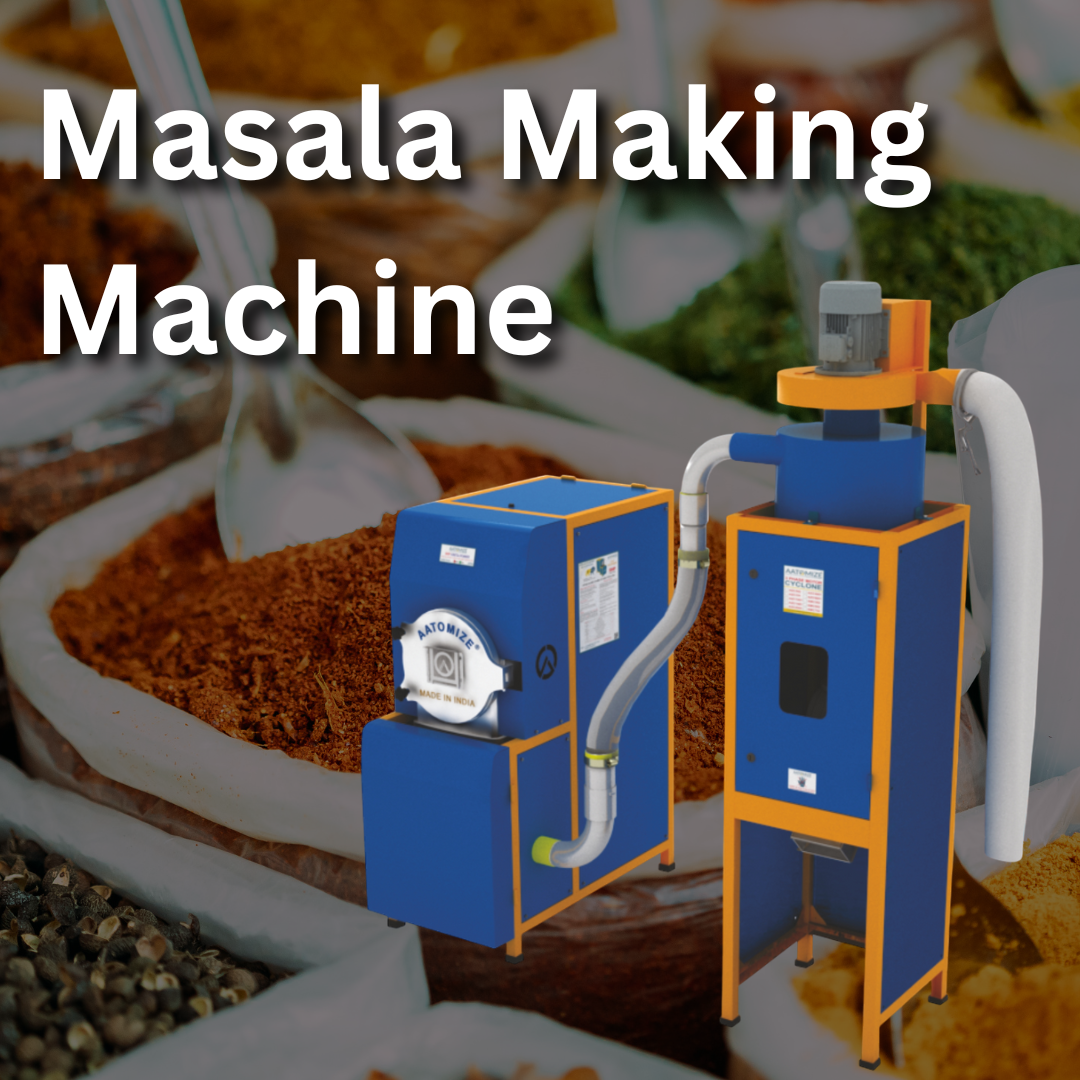
Masala Making Machine: Types, Features, and Price in India
In India, spices are more than just ingredients—they are tradition, taste, and livelihood. With rising demand for purity and freshness, more households and spice businesses are investing in masala making machines to grind spices themselves. These machines not only enhance quality but also ensure hygiene, consistency, and cost-efficiency.
Whether you're a home cook, a food entrepreneur, or an established spice manufacturer, choosing the right masala machine can transform your spice production process.
Types of Masala Making Machines
Choosing the right machine depends on your production scale, spice type, and usage frequency. Here’s a breakdown of the most common machines available:
1. Domestic Masala Grinder Machine for Home Use
- Capacity: 30–60 kg/hr
- Power: 2–5 HP
- Best For: Home kitchens, small restaurants
- Features: Compact design, quiet operation, low power usage
- Ideal for those who need fresh spices daily and prefer preservative-free grinding at home.
2. Small Commercial Masala Grinder
- Capacity: 50–100 kg/hr
- Power: 5–10 HP
- Best For: Local spice businesses, small-scale food producers
- Features: High-speed grinding, cyclone separator, stainless steel blades
- Perfect masala machine for commercial use, offering a balance between performance and affordability.
3. Industrial Masala Pulverizer Machine
- Capacity: 100–400 kg/hr
- Power: 10–25 HP
- Best For: Medium to large spice manufacturers
- Features: Double chamber grinding, blower system for dust control, continuous output
- A powerful option designed for processing large volumes of turmeric, chilli, coriander, and other spices.
4. Fully Automatic Masala Grinding Plant
- Capacity: 500 kg/hr and above
- Power: 25+ HP
- Best For: Spice factories, exporters
- Features: Automated cleaning, grinding, sieving, and packaging systems
- An automatic masala grinding machine is ideal for businesses aiming for high-volume, seamless operation with minimal manual intervention.
Key Features to Look For
When buying a masala making machine, prioritize the following specifications for performance, safety, and durability:
- Stainless Steel (SS304) Build
Food-grade and rust-resistant, ensures long life and clean processing.
- Cyclone and Blower System
Enhances fine powder quality and keeps the workspace dust-free.
- Copper-Wound Motor
Offers energy efficiency and longer operational lifespan.
- Double Chamber Grinding
Reduces variation in particle size and improves consistency.
- Overload Protection
Protects the motor during extended or high-load operations.
- Easy Maintenance Design
Enables quick cleaning and reduces machine downtime.
Masala Making Machine Price in India (2025)
The spice grinding machine price varies based on capacity, build material, brand, and added automation. Below is a general pricing guide:
|
Machine Type |
Power |
Capacity |
Price Range (₹) |
|
Domestic Masala Grinder |
2–5 HP |
30–60 kg/hr |
₹60,000 – ₹1,00,000 |
|
Small Commercial Grinder |
5–10 HP |
50–100 kg/hr |
₹1,00,000 – ₹2,50,000 |
|
Industrial Pulverizer |
10–25 HP |
100–400 kg/hr |
₹2,50,000 – ₹5,00,000+ |
|
Fully Automatic Plant |
25+ HP |
500+ kg/hr |
₹8,00,000 and above |
Note: Always consider after-sales support, availability of spare parts, and machine warranty while comparing prices.
Why Choose Commercial Atta Chakki?
Commercial Atta Chakki is a trusted name in the field of spice and flour processing equipment. With years of industry experience and hundreds of satisfied customers, the company continues to innovate and deliver reliable machines for domestic and industrial use.
What Sets Us Apart:
- Machines built with SS304 and branded motors
- High energy efficiency and minimal maintenance
- Customizable models for specific spice types
- Affordable pricing with complete transparency
- Pan-India support and prompt after-sales service
Whether you're grinding hard spices like turmeric or soft ones like coriander, our machines are engineered to offer fine, uniform output with zero contamination.
Maintenance Tips for Long-Term Use
- Clean daily using a dry brush or compressed air to avoid clogging.
- Lubricate moving parts regularly to reduce wear and tear.
- Do not overload the machine beyond its rated hopper capacity.
- Replace worn-out blades promptly for optimal grinding efficiency.
- Store in a moisture-free space to prevent rust and electrical faults.
Conclusion
A reliable masala grinder machine for home use or commercial purposes can elevate the quality, speed, and safety of your spice production. Whether you operate a small kitchen or a spice factory, investing in the right machine is a strategic step toward efficiency and purity.
Commercial Atta Chakki offers top-quality machines, expert guidance, and long-term support to ensure your success in the spice industry. Visit the website or contact our team today for a free consultation.
Frequently Asked Questions (FAQs)
Q. Can one machine grind multiple spices like turmeric, chilli, and coriander?
Yes. Most Commercial Atta Chakki models are compatible with a wide range of spices.
Q. What type of machine is ideal for turmeric grinding?
A 10–15 HP masala pulverizer machine with cyclone system is best suited for grinding hard spices like turmeric.
Q. Is SS304 better than mild steel?
Yes. SS304 is a food-grade, rust-resistant material and offers better hygiene and durability.
Q. What is the power consumption of a typical masala machine?
A 5 HP machine uses around 3.7 kWh per hour. Machines with higher horsepower will consume proportionately more electricity.
Q. Do you offer machine installation and training?
Yes. We provide both on-site installation and demo videos for smooth onboarding.